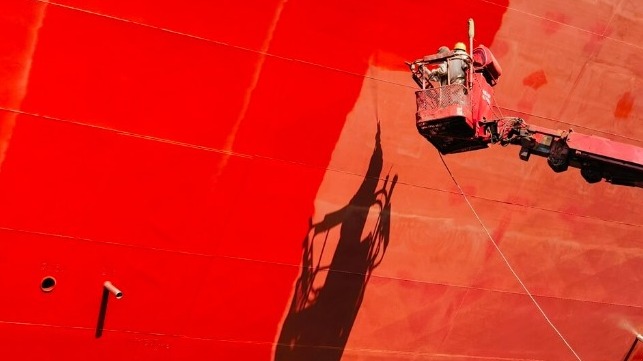Strict Regulations Create an Opportunity for Innovative Hull Coatings

 Geopolitical and regulatory changes are pressing the maritime industry to address its effects on the environment and respond promptly and effectively to the energy transition. In 2023, the International Maritime Organisation (IMO) published its Greenhouse Gas Strategy at the Marine Environment Protection Committee (MEPC 80), creating a common ambition to reach net zero by 2050.
Geopolitical and regulatory changes are pressing the maritime industry to address its effects on the environment and respond promptly and effectively to the energy transition. In 2023, the International Maritime Organisation (IMO) published its Greenhouse Gas Strategy at the Marine Environment Protection Committee (MEPC 80), creating a common ambition to reach net zero by 2050.
This revised ambition will have a significant impact on the maritime sector. The IMO has established checkpoints for its ambitions. Against a 2008 baseline, it wants to see reductions in the total annual GHG emissions from international shipping of at least 20%, striving for 30%, by 2030, and at least a 70% reduction by 2040, striving for 80%. The targets also stipulate the need for an uptake of near-zero GHG emission technologies, fuels and energy sources, which must represent at least 5%, striving for 10%, of the energy used by international shipping, by 2030.
This was combined with an IMO mandate that requires all ships to calculate their Energy Efficiency Existing Ship Index (EEXI), while also establishing their annual operational carbon intensity indicator (CII). These frameworks were then closely followed by the introduction of maritime transport into the EU’s Emissions Trading System (ETS) in January 2024. These newly introduced frameworks all combine to create a palpable sense of urgency surrounding the means and method by which the shipping industry will achieve its ambitious decarbonization targets.
The continued demand for improved sustainability to meet the industry’s decarbonization targets has become increasingly complex. It is widely regarded that a future net-zero shipping industry is predicated on the establishment of large-scale availability of green fuels as a replacement for traditional fossil fuel sources. However, the current availability of e-fuels and biofuels and the significant investment required to scale alternative fuels represent a high barrier to entry for the industry.
Improving operational efficiencies to reduce emissions and ensure compliance with regulation is critical while it can also help to mitigate the significant cost implications of adopting green fuels. Although the future of these alternative fuels does appear to be progressing, reducing emissions quickly and effectively - with proven and accessible technology - is essential to achieving the IMO’s short-term decarbonization targets.
Anti-fouling coatings are some of the most widely available solutions to improve operational performance while lowering vessel’s CO2 emissions. Increased drag from biofouling on the underwater hull of a vessel requires greater fuel use for a vessel during its voyage, increasing fuel costs and worsening GHG emissions.
As our customers adapt to even more stringent global and regional regulations, so to must the solutions that are developed to support them. The need for innovation has led our R&D team to develop ground-breaking solutions, such as our patented HydroSmoothXT(TM) water trapping technology, which incorporates a crosslinked, three-dimensional hydrophilic polymer. The coating effectively traps a microscopic layer of water on its surface as the ship travels through the water. This smooths the water around the hull, creating a slippery surface that reduces hull-to-water friction. As a result, fuel costs and emissions are reduced by up to 8% compared to other silyl-acrylate SPC systems manufactured without hydrogel.
Our Aquaterras product line broke new ground as the world’s first coating solution to provide industry-leading antifouling protection while remaining completely biocide-free. It naturally repels any biological adhesion onto its surface, while the constant exposure of its active micro-domain structure creates a continuous self-polishing performance. This combination creates a unique reaction that continually smooths the hull’s surface as it travels. This creates the dual benefit of lowering emissions by up to 14.7%, thanks to an average speed loss of 1% over a 60-month period (compared to the market average speed loss of 5.9% over a similar time period, per MARINTEK research data).
The shipping industry currently faces a myriad of competing challenges. However, these challenges also represent significant opportunities to effect positive change, both within our industry and on a global scale. As the industry grapples with implementing new and sophisticated technologies that will support its decarbonization ambition, there has never been a more important time to effect immediate change by bringing genuinely accessible solutions to market that deliver proven, real-world results.
Gladys Goh is President of Nippon Paint Marine.
The opinions expressed herein are the author's and not necessarily those of The Maritime Executive.
No comments:
Post a Comment